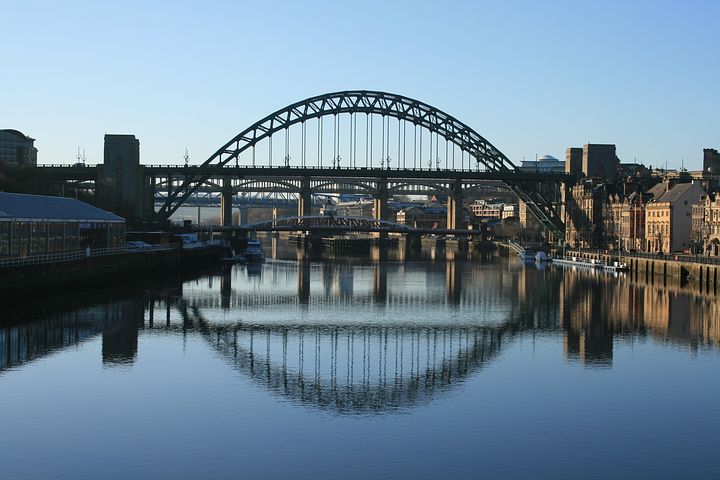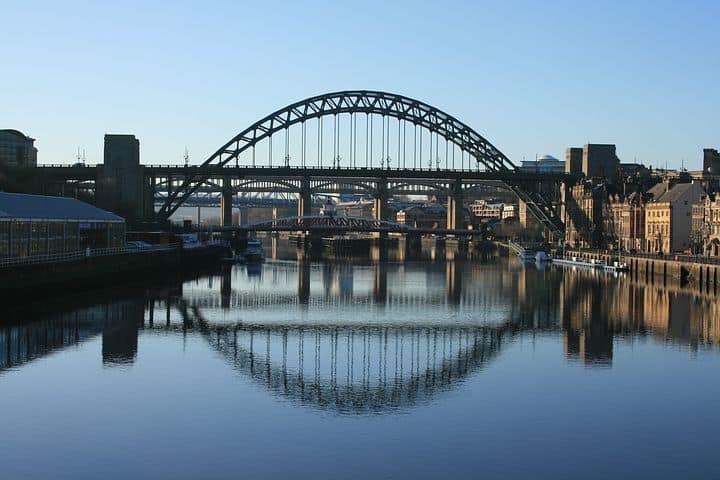As you approach Gateshead from the south, you cannot fail to see the iconic ‘Angel of the North’ sculpture by Antony Gormley, which stands 20 metres high with a 54 metre-wide wing span. But we all know that carrying on a little bit further north is when you will see an even more iconic structure – the Tyne Bridge, arguably Newcastle’s most famous landmark.
The Tyne Bridge is without doubt one of Newcastle’s most recognised features, and many tourists are drawn here to take a trip across the amazing structure and take in the spectacular views up and down the River Tyne. The bridge itself stands very close to the site of the first bridge ever to be built to span the Tyne, a stone bridge which was built by the Romans.,
Even though the initial plans https://cpsych.org.uk/accutane-pills/ for the Tyne Bridge go back as far as 1883, the plans didn’t get the go ahead until 1924, with work beginning in 1925.
Tyne Bridge Construction
As a construction company based in the North East of England, the history of how iconic structures within our own region, such as the Tyne Bridge, is very interesting to us and we are sure you will also find it fascinating.
Many local people assume that the design of the Sydney Harbour Bridge in Australia was based on the Tyne Bridge, seeing as the the Tyne Bridge was finished first. However, quite the reverse is true! Designed by Mott, Hay and Anderson, their design for the Tyne Bridge was based on the Sydney Harbour Bridge – a design that was originally inspired by the Hell Gate Bridge of New York, a railway bridge designed by Gustav Lindenthal that was completed in 1916.
The myth that the Tyne Bridge was the inspiration for the Sydney Harbour Bridge arose because its construction was completed before the Australian bridge was finished in 1932. However, the Sydney Harbour Bridge took longer to construct because of its much larger size. The timeline for the Tyne Bridge construction was:
- 1925: The Tyne Bridge construction project was placed into the hands of Dorman Long of Middlesbrough and work began in August.
- 1928: After three years continuous construction, the Tyne Bridge arches take on their recognisable shape. The bridge was finished on February 25th, 1928.
- 1928: The Tyne Bridge was officially opened on October 10th by King George V and Queen Mary, who had the privilege of being the first people to drive across the bridge in their Ascot landau vehicle.
Considered as one of the modern miracles of its time, the bridge has since become the defining long-standing symbol of Tyneside. The tenth tallest structure in the city, the bridge towers are built over five storeys using Cornish granite. Local architect Robert Burns Dick designed the bridge towers to become useful warehouses for local industry, but the warehouse floors were never completed, meaning that the towers storage areas were never used as intended.
The bridge cost £1,200,000 to build, which is mere peanuts in today’s prices – but was a hugely significant amount back then. With a 531 feet span and a road deck that sits 84 feet above the waters of the Tyne, the bridge needed a lot of land clearing at each side of the river to accommodate the build. Several old inns and factories needed to be demolished to make way for the bridge.
Painting and Maintaining the Tyne Bridge

Once the Tyne Bridge construction was complete, it then needed to be painted. Painting the bridge was a mammoth task and the green paint used was especially formulated by J. Dampney Co. of Gateshead. Multi-million pound plans are in place to give the grade II-listed bridge a repaint and to carry out much needed repairs. It is not surprising that the maintenance bill runs into the millions with the bridge being used by more than 70,000 vehicles a day.
The Tyne Bridge refurbishment works include:
- Concrete and drainage repairs within the towers
- Door and window repair/replacement
- Full grit blasting and repainting of the bridge steelwork
- Lighting repairs/replacement as required
- Resurfacing
- Road drainage and joint repairs/replacement
- Security improvements
- Steelwork and cast iron repairs/replacement as required
The repainting of the bridge itself is set to cost £10m while the bridge resurfacing is set at around the £1m mark. Subject to funding, the works could start in early 2019.
Iconic Status
There is no denying that the distinctive shape and commanding presence of the Tyne Bridge has earned an iconic status and has become a symbol of Tyneside.
Being one of the greatest symbols of Tyneside’s industrial pride and engineering prowess – no wonder that it has become know as being the ‘bridge that Geordies come home for‘.

